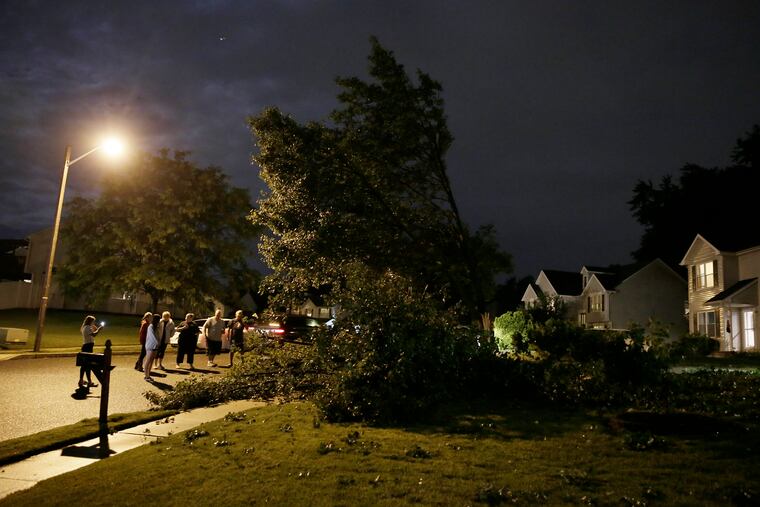Tornado confirmed in Gloucester County, National Weather Service says
Powerful storms swept through the region causing property damage, but no injuries were reported.

The National Weather Service said a confirmed tornado touched down Thursday night in Mullica Hill, Gloucester County, as powerful storms swept through the region.
The weather service, which made the call based on a video, said a survey team would visit the area Friday to determine the strength and path of the twister. The team also will inspect storm damage reported from Salem County into Camden County.
The extent of damage was not immediately known, but Harrison Township Police Lt. Ronald Cundey said the department did not receive any calls about the twister.
The weather service did not post a video with its tweet, but several were posted by other Twitter users showing possible funnel clouds extending down from the sky.
One video reportedly from Mullica Hill shows what appears to be a funnel cloud touching down and then debris swirling upward.
There were reports of flooding across the region, including the Schuylkill Expressway, and some wind damage to buildings, but no reported injuries.
In Gloucester Township, Blackwood Elementary School was closed Friday because it had no power and police there reported some streets were closed due to downed trees and power lines.
The tornado was at least the fourth to touch down within 50 miles of Philadelphia in the past month. Other recent tornadoes in the Philadelphia region include a May 19 twister at a Bucks County campground, a May 21 tornado in Berks County, and a May 22 twister on the Bucks-Lehigh border.
The Mullica Hill twister was the second to touch down in New Jersey this year, following an EF-1 tornado that hit Stanhope in Sussex County on May 28, also causing damage but no injuries. The state averages about two tornadoes a year, said Chad Shafer, a meteorologist at the National Weather Service regional office in Mount Holly.
Bill Bunting, chief of the forecast operations branch at the storm center, in Norman, Okla., has said a stubborn pattern in the upper atmosphere has been particularly conducive to setting off the severe storms that spawn tornadoes.
As of May 31, there had been 935 reported tornadoes in the United States so far in 2019, compared to an average of 1,125 for all of the last three years.
“The fact that it’s been persistent is unusual, but not unprecedented,” Bunting said.
Tornado numbers generally have increased, said Bunting, but that might be due to better detection, thanks to more sophisticated radar systems and increased reporting at a time when image-recording equipment is pervasive and continually improving.
As for the hand of worldwide warming, tornado specialists point out that twisters are idiosyncratic storms that get their ferocious spin from a complicated matrix of conditions.
“It’s not a cop-out,” said Bunting. “We just don’t know.”
Staff writer Joseph A. Gambardello contributed to this report.